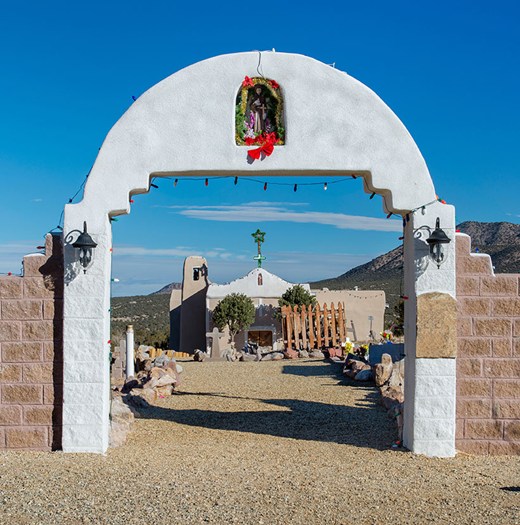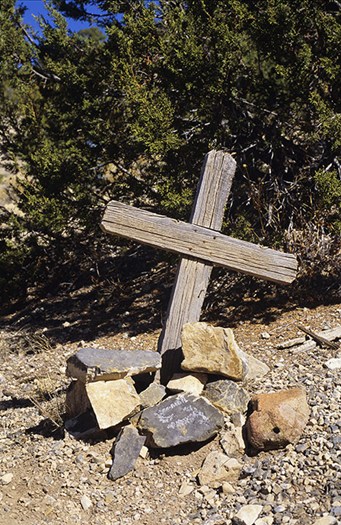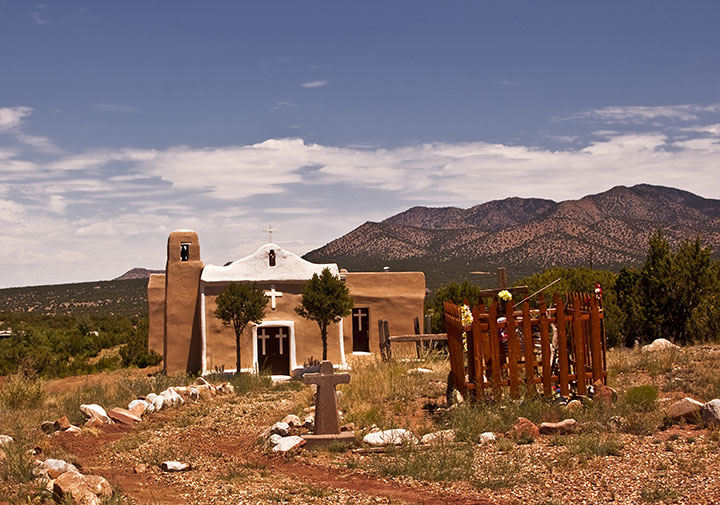SANTA FE, N.M. - I’ve reached a crossroads on my trip through New Mexico’s glorious outback — a juncture where America’s present intersects with its cowboy past. The voice inside my car’s GPS tells me to take Interstate 25 — the fastest route to Albuquerque. The guide book I’m holding indicates a scenic bypass known as “The Turquoise Trail” (Hwy. 14) will offer me more insight into this wonderful state’s history.
I decide to turn off the GPS and point the car in the direction of The Turquoise Trail, the first road built that connected Santa Fe with Albuquerque.However, the Trail’s history dates back long before New Mexico’s two largest cities were first settled.
The 100-kilometre-long Trail was first carved out of the desert wilderness by the state’s native people, who’ve been around here since pre-historic times. Then, when the Spanish arrived, they carted the riches (gold, silver, turquoise and zinc) they found in the surrounding mountains back along the Trail to Mexico before being shipped to Spain.
Legendary cowboys like Kit Carson rode the Trail and outlaws lurked in the sagebrush waiting to ambush the stage coaches that brought easterners to the southwest.
The highway is dotted with small mining towns — Golden, Cerrillos, Madrid, Tijeras — that once lured fortune hunters to these parts, and ghost towns, reminders that there wasn’t always “gold in them thar hills.”


Left: Old missions where were ancient travellers once stayed. Right: Simple wooden headstones tell the story of those who did not finish their journey on The Turquoise Trail.
My drive along The Turquoise Trail is interrupted by gorgeous views of the endless outback, which sprawls out until it reaches majestic mountain ranges with lyrical Spanish names — Ortiz, Sandia, San Pedro and the Cerrillos Hills.
Charming Cerrillos, whose history dates back to 900 AD, is the first major town I enter while driving south. The former boom town is a shadow of its heydays when precious turquoise was cut out of the mountains. Some of it even found its way into Spain’s crown jewels.
Miners from all over the world made their way to Cerrillos to dig for precious metals and at one time the town boasted 21 saloons.
Cerrillos, whose dirt streets are a vivid reminder of the Old West, was so important that it was once considered a candidate for the state capital before Santa Fe won out.
As I scan the flat, dusty terrain bordering the Trail, I almost expect John Wayne to appear on the horizon riding his trusty steed; plenty of Hollywood westerns were made in this area and some movie stars actually live here.
The “Welcome to Madrid” sign indicates I’ve arrived in one of the most interesting places in the United States — a town that was once the biggest coal producer in the southwest before it became a ghost town and then later was reborn as the artist colony it is today.

Above: Adobe-style dwellings remind drivers of this highways earliest days.
Madrid is one of only two places in the world where soft and hard coal can be found in the same mine and they dug deep into the earth — shafts as long as 5,000 metres deep — to get it. However, Madrid’s fate was doomed when coal fell out of favour and it was soon abandoned. It remained a ghost town until hippie artists arrived in the ’60s and ’70s. They converted old company stores and homes into galleries and today they rival those I admired in Santa Fe.
It’s time for a fill up, so I pull up to a gas pump in Golden, a former gold mining town, and the attendant tells me his birthplace was once called El Real de San Francisco de Paola. But when the U.S. Post Office arrived in the mid-1800s, they decided America had too many San Franciscos and renamed the town.
“Hope you enjoyed your Golden moment,” laughs the young man as he waves another stranger goodbye.
A few kilometres down the road, I reach the high point of my drive — both literally and figuratively — when I pull into beautiful Sandia Crest (a short side trip off the Trail along Hwy. 536) where, from the 20,000-metre summit of Sandia Mountain, I get a breathtaking view of the surrounding glory.
To reach the summit, I take the Sandia Peak Tramway, the longest jig-back tram in the world, and the ride is one of the most awe-inspiring I’ve ever experienced.
Cedar Crest, whose Museum of Archaeology traces the existence of North America’s earliest inhabitants — right back to the Ice Age — is where I pull off and enjoy a spectacular southwestern meal.
I finally reach the end of the Trail in Tijeras, the southern gateway to this remarkable highway. This is another town that’s teeming with archaeological wonders but I’m running out of time, so I jump back on I-25 and race to Albuquerque’s airport to catch my flight.
The drive and stops along The Turquoise Trail consume five hours of my time. It would have taken less than an hour to reach Albuquerque had I elected to take I-25. But time on The Turquoise Trail is time well spent.
Information
All major U.S. airlines offer flights to Albuquerque from Toronto. / For more information on New Mexico, go to
www.newmexico.org / For information on The Turquoise Trail, go to
www.turquoisetrail.org
About the Author
Marc Atchison is a veteran journalist and a seasoned traveller with more than 20 years of travel writing experience. As the former Travel Editor of the Toronto Star, Canada's largest newspaper, and now Editor-in-Chief and Senior Writer for TraveLife magazine (Canada) and travelife.ca, Marc has been to over 100 countries in the world. Japan is one of his favorite destinations and he's been there on numerous occasions.